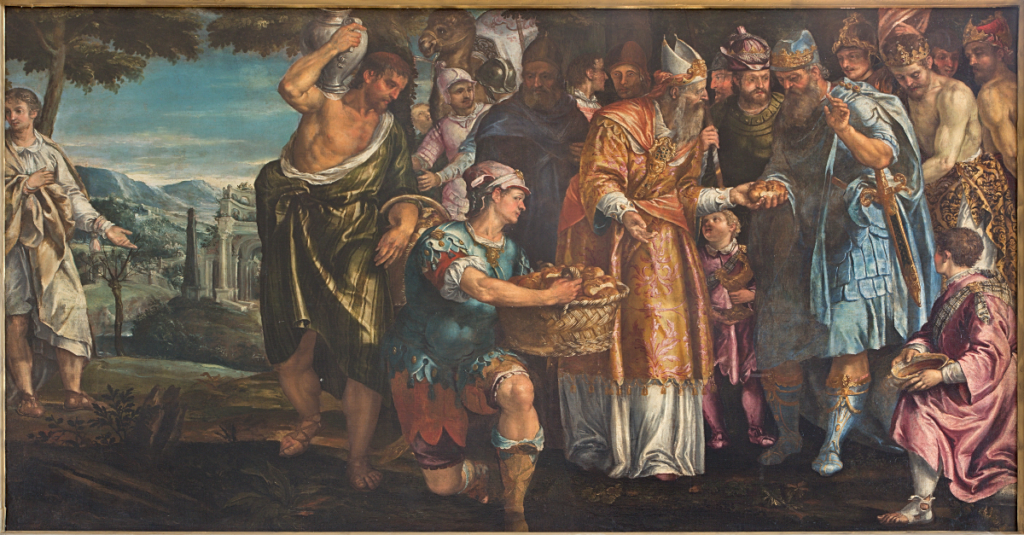
OF ALL THE Biblical kings, few are more colorful or legendary than Solomon.
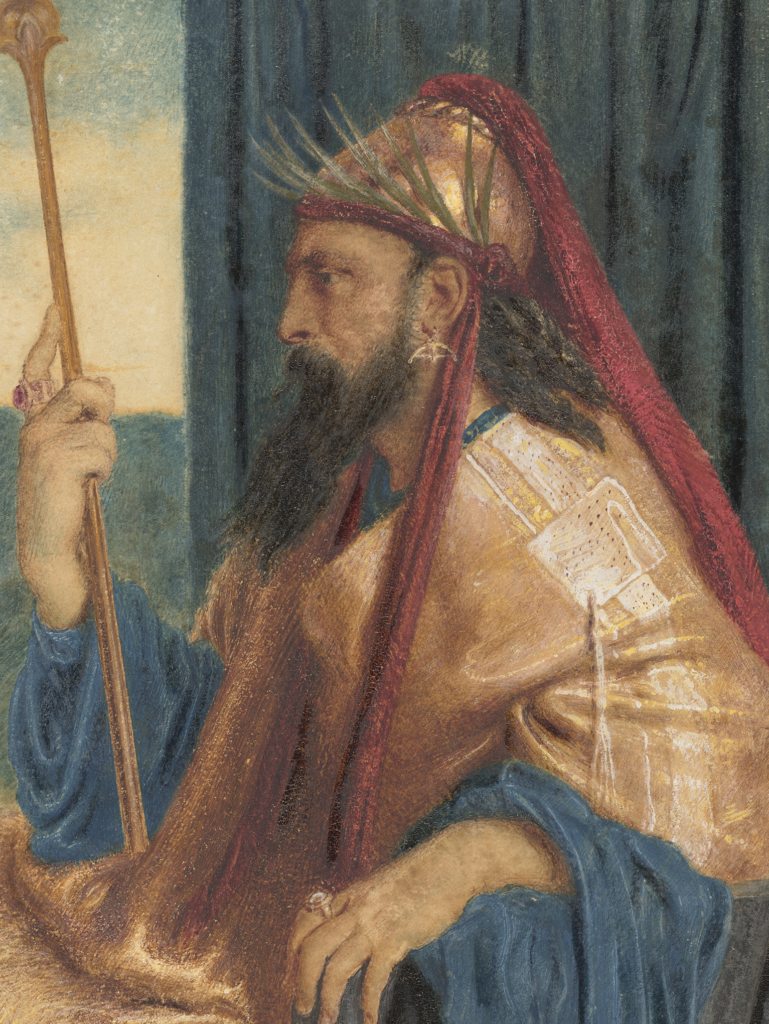
[Solomon (/ˈsɒləmən/), also called Jedidiah, was a Jewish monarch of ancient Israel and the son and successor of King David, according to the Hebrew Bible or Old Testament. He is described as having been the penultimate ruler of an amalgamated Israel and Judah. The hypothesized dates of Solomon’s reign are from 970 to 931 BCE. According to the Bible, after his death, his son and successor Rehoboam adopted a harsh policy towards the northern tribes, eventually leading to the splitting of the Israelites between the Kingdom of Israel in the north and the Kingdom of Judah in the south. Following the split, the biblical narrative depicts his patrilineal descendants ruling over Judah alone.]
Wealthy beyond imagination, wise beyond words, and a slave driver unequalled, Solomon’s most famous accomplishment was the construction of a magnificent complex of buildings, which included an opulent temple reportedly made of the finest stone and generously ornamented with gold.
What if EVERYONE Was Wealthy Beyond Their Wildest Dreams? – Library of Rickandria
In the political sphere, Solomon made history by re-establishing long-severed ties between the Hebrews and Egypt.
Not only had Solomon become an advisor to Egyptian pharaoh, Shishak I, he also married the pharaoh’s daughter.
During the time he spent in Egypt, Solomon took instruction in the Brotherhood.
Upon returning to Palestine, Solomon erected his famous temple to house the Brotherhood in his own country.
Naturally, Jehovah was the principle God of the new temple, although Solomon permitted the adoration of other local Gods such as Baal, chief male God of the Canaanites.
YHVH: The Truth About “Yahweh/Jehovah” – Library of Rickandria
Solomon’s temple was modeled after the Brotherhood temple in El Amarna, except that Solomon omitted the side structures which had caused the El Amarna temple to be shaped like a cross.
Building Solomon’s temple was no small task.
To carry out this architectural feat, Solomon brought in special guilds of masons to design his buildings and to oversee their construction.
Those special guilds were already important institutions in Egypt, and their origins are worth looking into.
Architecture is an important art that shapes the physical landscape of a society.
One can tell a great deal about the state of a civilization by looking at the buildings it erects.
For example, Renaissance architecture imitated classical Roman architecture with its grand and ornate designs, indicating a culture undergoing intellectual and artistic ferment.
Modern architecture tends to be efficient, but sterile and dehumanized, revealing a culture which is very businesslike, but artistically stagnant.
Architecture tells us what class of people most influence a culture.
The Renaissance was led by thinkers and artists; our modern era is being fashioned by efficiency-oriented business people.
In ancient Egypt, the:
- engineers
- draftsmen
- masons
who worked on the big architectural projects were accorded a special status.
They were organized into elite guilds sponsored by the Brotherhood in Egypt.
The guilds served a function roughly similar to that of a trade union today.
Because the guilds were Brotherhood organizations, they used many Brotherhood ranks and titles.
They also practiced a mystical tradition.
Evidence of the existence of these special guilds was uncovered by archaeologist Petrie during his expeditions to the Libyan desert in 1888 and 1889.
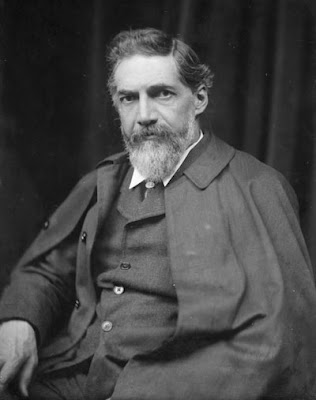
[Sir William Matthew Flinders Petrie FRS FBA (3 June 1853 – 28 July 1942), commonly known as simply Sir Flinders Petrie, was a British Egyptologist and a pioneer of systematic methodology in archaeology and the preservation of artefacts. He held the first chair of Egyptology in the United Kingdom and excavated many of the most important archaeological sites in Egypt in conjunction with his wife, Hilda Urlin. Some consider his most famous discovery to be that of the Merneptah Stele, an opinion with which Petrie himself concurred. Undoubtedly at least as important is his 1905 discovery and correct identification of the character of the Proto-Sinaitic script, the ancestor of almost all alphabetic scripts.]
In the ruins of a city built around 300 B.C., Dr. Petrie’s expedition uncovered a number of papyrus records.
One set described a guild that held secret meetings around the year 2000 B.C.
The guild met to discuss:
- working hours
- wages
- rules for daily labor
It convened in a chapel and provided relief to widows, orphans, and workers in distress.
The organizational duties described in the papyri are very similar to those of “Warden” and “Master” in a modern branch of the Brotherhood which evolved from those guilds:
Freemasonry.
Decoding Rosicrucianism & Freemasonry Using the Unified Field – Library of Rickandria
Another reference to the guilds is found in the Egyptian Book of the Dead, a mystical work dating from about 1591 B.C.
The Book of The Dead – The Papyrus of Ani – Library of Rickandria
The Book of the Dead contains some of the philosophies taught in the Egyptian Mystery Schools.
It quotes the God Thot saying to another God, Osiris:
I am the great God in the divine boat;…
I am a simple priest in the underworld anointing [performing sacred rituals] in Abydos [an Egyptian city], elevating to higher degrees of initiation;…
I am Grand Master of the craftsmen who set up the sacred arch for a support. [1]
“Grand Master” is the most common title used by Brotherhood organizations to designate their top leaders.
The above quote is significant because it states that one of Egypt’s Custodial “Gods,” one who traveled about in a divine “boat,” was a top leader in one of those ancient guilds.
It also indicates that this “God” was responsible for initiating people into the higher degrees of mystical Brotherhood teachings.
This is further testimony of the direct role that Custodians were said to play in directing the affairs of the corrupted Brotherhood.
It is interesting to note that the Book of the Dead also contains a reference to the battle between the ruling Custodial “Gods” and the “snake” (the original uncorrupted Brotherhood).
In praises sung to the Egyptian “Gods,” we read:
Thine enemy the Serpent hath been given over to the fire.
The Serpent-fiend Sebua hath fallen headlong, his forelegs are bound in chains, and his hind legs hath Ra carried away from him.
The Sons of Revolt shall never more rise up. [2]
The Egyptians often portrayed their “Gods” with animal heads or features as a way of symbolizing traits and personalities.
In the above quote, the Serpent is given four legs.
The Serpent later came to symbolize darkness, which the sun-God Ra “defeated” every morning by bringing about the new day.
Before that mythology was invented, however, the Serpent was a literal enemy of the ruling “Gods.”
Some of the Serpent’s followers were known as the “Sons of Revolt,” who were dedicated to destroying the chief Custodial “God” and establishing in his place the dominance of the “Serpent” (the early uncorrupted Brotherhood) on Earth.
After the defeat and corruption of the “Serpent,” it appears that the “Sons of Revolt” turned around and rebelled against the corrupted Brotherhood when the Brotherhood began to send out conquerors from Egypt.
It was not long, however, before the revolutionary groups were reabsorbed back into the corrupted Brotherhood organizations and began contributing to the Brotherhood’s artificial conflicts, as we shall see later.
The Brotherhood’s masons’ guilds survived down through the centuries.
Guild members were often free men, even in feudal societies, and were therefore frequently referred to as “free masons.”
The guilds of free masons eventually gave birth to the mystical practice known today as “Freemasonry.”
The mystical Freemasons became a major Brotherhood offshoot that would take on great political importance later in history.
As spiritual knowledge within the Brotherhood was being replaced in ancient Egypt by incomprehensible allegories and symbols, costumes became increasingly important because of their symbolic value.
The most visible and important piece of ceremonial garb in many Brotherhood organizations, including Freemasonry, has long been the apron.
The symbolic apron, which is worn at the waist like a kitchen apron, provides a stunning visual link between the ancient Custodial “Gods” and the Brotherhood network.
Many Egyptian hieroglyphics depict their extraterrestrial ”Gods” wearing aprons.
The Truth About Extraterrestrials – Library of Rickandria
The priests of ancient Egypt wore similar aprons as a sign of their allegiance to the “Gods” and as a badge of their authority. =
On display at the Egyptian Museum in San Jose, California, is an ancient Egyptian statuette discovered in a tomb in Abydos. =
The statuette depicts an Egyptian prince holding his hands in a ritualistic posture that Dr. Lewis of the Rosicrucian Order describes as,
”Familiar to all Rosicrucian lodge and chapter members.” [3]
A prominent feature of the statuette is the triangular apron worn by the prince.
The Egyptian Museum believes that the statuette was carved as early as 3400 B.C., during Egypt’s first dynasty.
If this date is accurate, then the symbol of the apron and one of its associated mystical rituals came from that period of Egyptian history when the “Gods” were said to be so literal that furnished homes were built and maintained for them.
The earliest ceremonial aprons appear to have been simple and unadorned.
As time went on, mystical symbols and other decorations were added.
Perhaps the most significant change to the apron occurred during the reign of the powerful Canaanite priest-king, Melchizedek, who had achieved a very high status in the Bible.
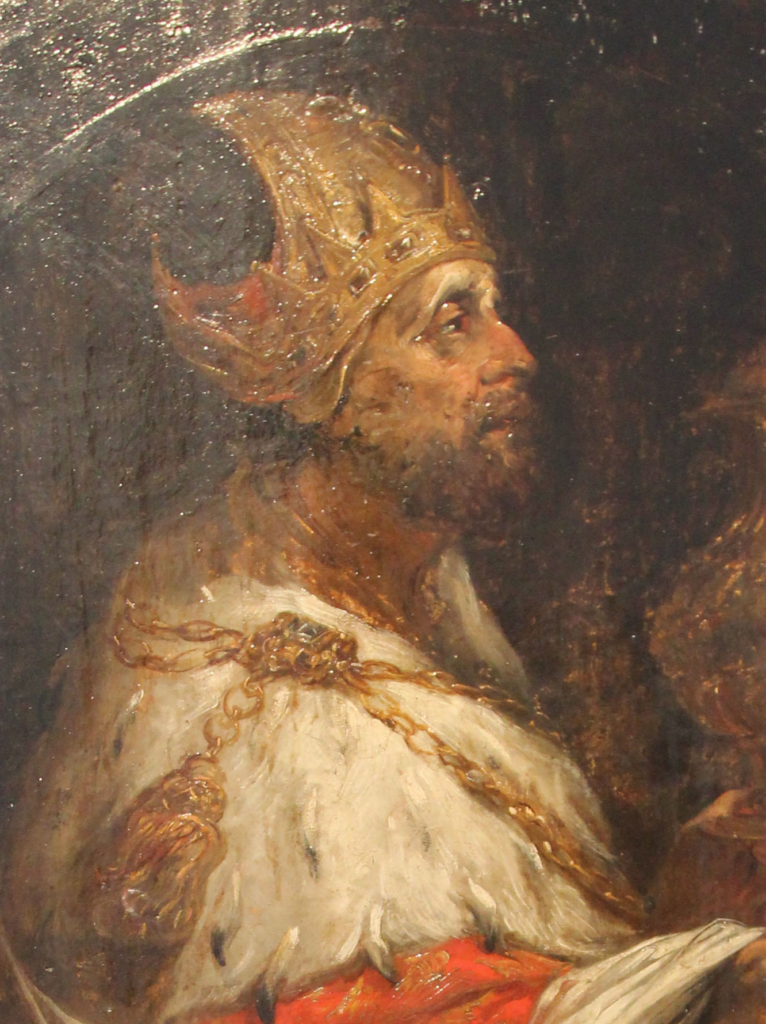
[In the Bible, Melchizedek (/mɛlˈkɪzədɛk/; Biblical Hebrew: מַלְכִּי־צֶדֶק, romanized: malkī-ṣeḏeq, ‘king of righteousness,’ ‘my king is righteousness,’ or ‘my king is Zedek’), also transliterated Melchisedech or Malki Tzedek, was the king of Salem and priest of El Elyon (often translated as ‘most high God’). He is first mentioned in Genesis 14:18–20, where he brings out bread and wine and then blesses Abram and El Elyon.]
Melchizedek presided over an elite branch of the Brotherhood named after him:
the Melchizedek Priesthood.
Beginning around the year 2200 B.C., the Melchizedek Priesthood began to make its ceremonial aprons out of white lambskin.
White lambskin was eventually adopted by the Freemasons who have used it for their aprons ever since.
If the Custodial “Gods” and the Brotherhood had confined their activities to the ancient Middle East and Egypt, the rest of human history would have been much different, and this book would never have been written.
Instead, the Brotherhood network was expanded throughout the entire eastern hemisphere by aggressive missionaries and conquerors.
One of their targets became India.
Hinduism was about to be born.
The Gods of Eden – Chapter 8: Melchizedek’s Apron (basecamp.com)
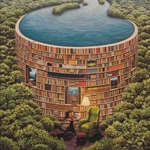
Leave a Reply